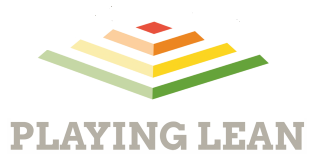Uber is a multinational ride-hailing company which was founded by two entrepreneurs, Camp and Kalanick, in 2009. Its services and mobile app were officially launched in 2011 in San Francisco, when you could only hail a black luxury car and the price was 1.5 times higher than hailing a taxi. Uber now offers many services such as peer-to-peer ridesharing, ride service hailing, food delivery and renting electric bikes and scooters. By 2019 it was estimated that Uber had over 110 million users worldwide.
Uber drivers must meet many requirements and undergo background checks, and in many cities driver's vehicles (which can be their own or a rent or lease) have to pass annual safety inspections. In some cities drivers are even required to have a business license. To ensure the safety of the passengers and eliminate any misuse from their drivers, Uber occasionally requires drivers to take selfies when logging into Uber with their Real-Time ID Check mechanism.
Uber's pricing model is dynamic. The price for the same route can vary based on supply and demand, so if a ride in a certain area at a certain time is in high demand, fares increase. The rider's final cost of the journey can also increase if the driver has to travel a long way to the pick up point, and even if the driver has to wait more than 2 minutes for the passenger to show up. But if you schedule your ride more than an hour before pick up time (feature available in the US), the price is locked in and cannot increase. This upfront pricing model was first rolled out by Uber's rival Lyft.
While Lyft was first to introduce this feature which eased the stress of travel for the passengers , Uber was more successful in rolling into the ebike market. Since more people live in the city and need more and quicker options to move around, Uber acquired bike-sharing startup JUMP. Uber CEO Dara Khosrowshahi said she sees Uber “moving from just being about car sharing and car hailing to really helping the consumer get from A to B in the most affordable, most dependable, most convenient way.”
A market that still has no clear winner is the self-driving cars market. By 2018 Lyft has successfully completed 5000 rides using self driving cars in Las Vegas, and is vigorously working on the safety issues that come with this. Uber, on the other hand, has had problems in their testing.
In 2016 Uber launched its first self-driving car services to select customers in Pittsburgh with a fleet of well equipped Ford Fusion cars. The vehicles also had a safety driver up front in case of bad weather or other situations where a human driver was needed. A few months later, Uber began using self-driving Volvo XC90 SUVs in its hometown of San Francisco, but California's DMV “has ordered Uber to stop testing its self-driving hardware and software on California roads until the company gets proper permission from the state.” They then moved the testing to Arizona. These test trips included two Uber engineers in the front as a safety precaution. In 2017 there was an accident in which an Uber self-driving car was flipped on the side, but thankfully no one was injured. After taking a short break from testing to investigate what went wrong, Uber returned to testing with only one safety driver.
In March 2018, a woman was hit by an Uber self-driving car while crossing the road. She died from her injuries in a hospital. The car was in autonomous mode with an operator behind the wheel. She was the first person to be killed by a self-driving car. Arizona’s Governor suspended the company’s right to operate autonomous cars on public roads in Arizona and Uber stopped testing. Although Uber faced a lot of fallout because of the accident, Arizona also took a lot of heat for being “the wild west of robot car testing with virtually no regulations in place.”
In December 2018, after they were approved, Uber started testing the cars again in Pittsburg, but only during daylight hours and at lower speed. In February 2020 they managed to get a permit to test self-driving cars in California with backup drivers.It seems that the testing and development of this service is costing Uber quite a bit, a reported $20 million a month, according to TechCrunch.
The self-driving car research is not the only field that's burning Uber’s money. Uber is developing UberElevate, a shared air transportation service. They will use small VTOL (vertical takeoff and landing) aircrafts to transport people from suburbs and cities, and ultimately within cities. Building these small aircrafts probably won’t be the hardest part of this journey.
Staying on top of the ride-sharing market is not always easy. Sometimes being the first mover is not the best option. As we learned from Lyft and BlaBlaCar, you win some, you lose some. Uber has also won some, and lost some, but at what cost?
Uber is one of the companies represented in the Ride Sharing Scenario. You can use this deck to expand your Playing Lean 2 game. Take advantage of free shipping (offer expires 1 Aug) and grab your copy!